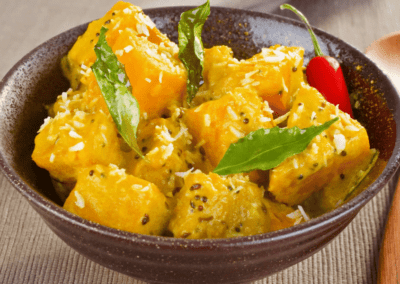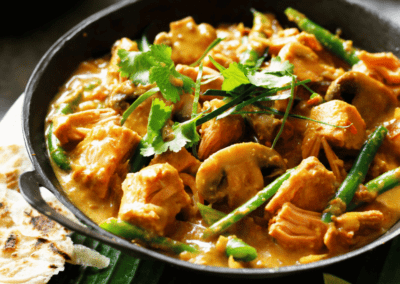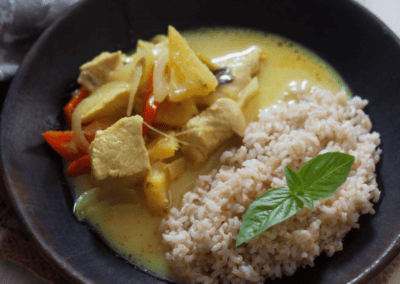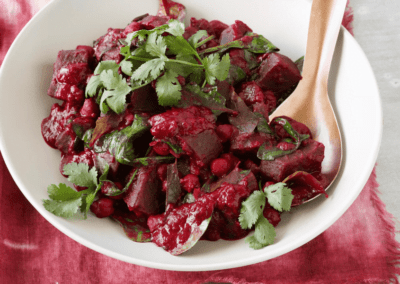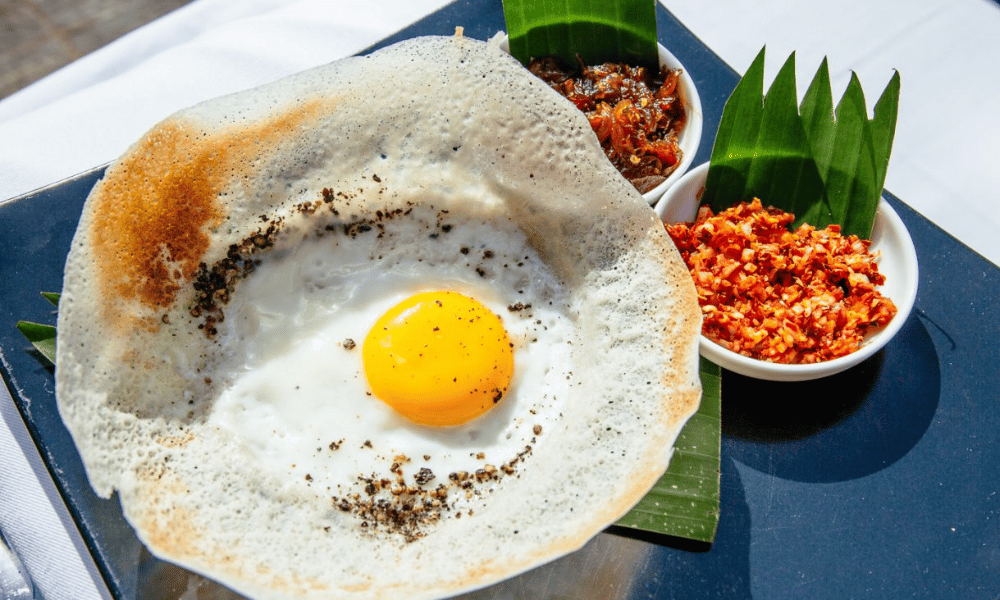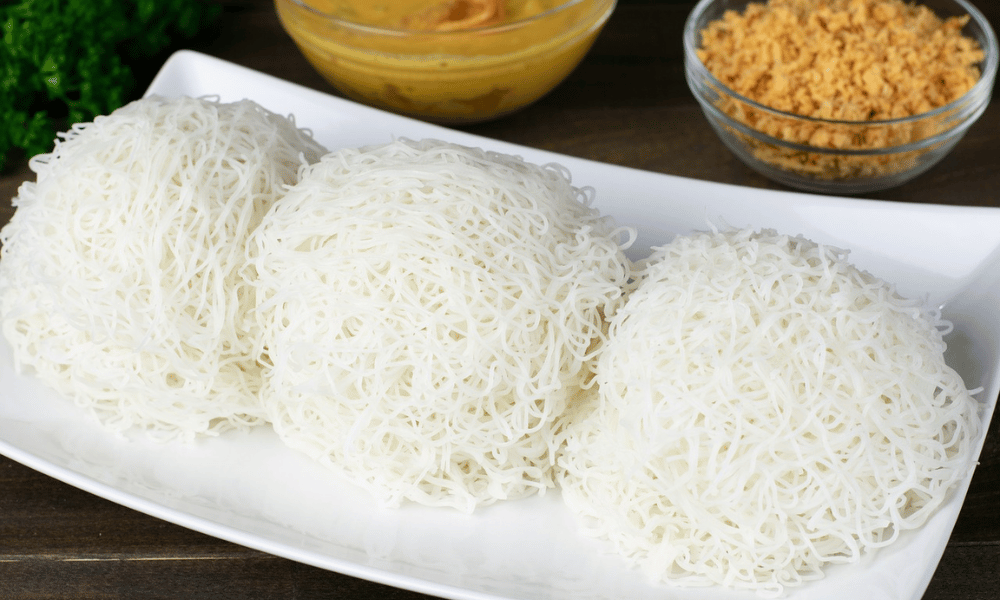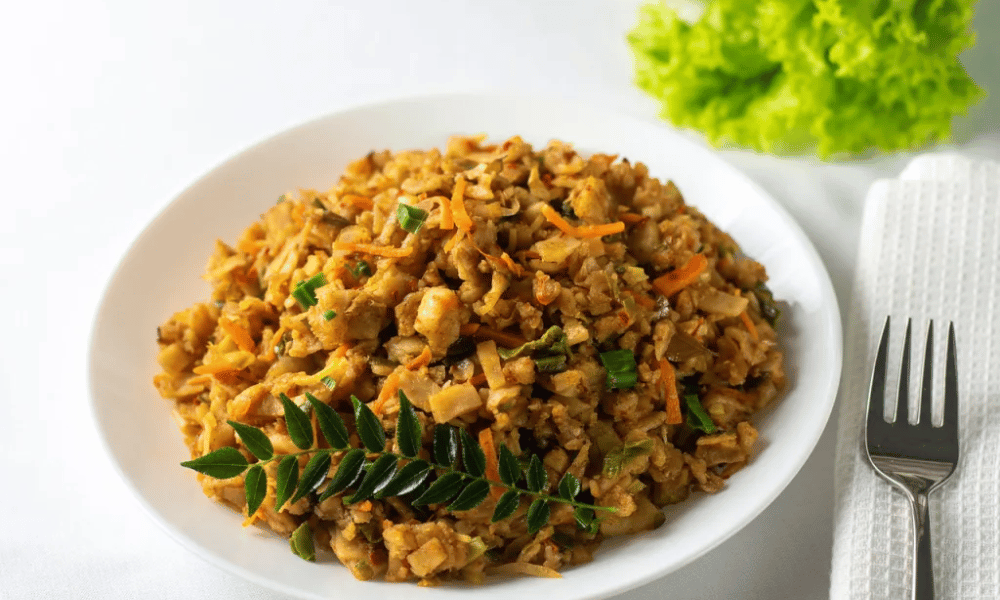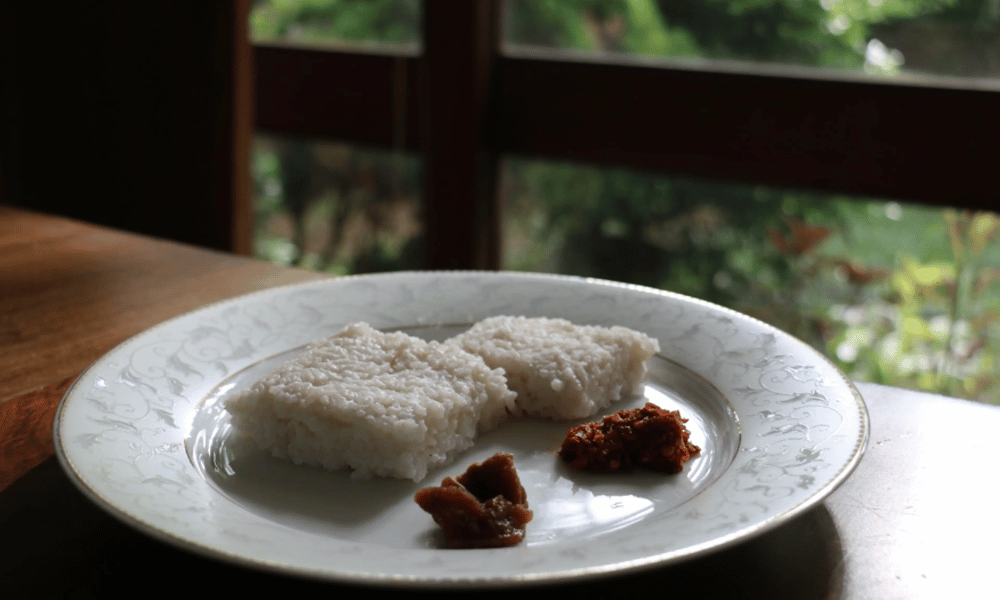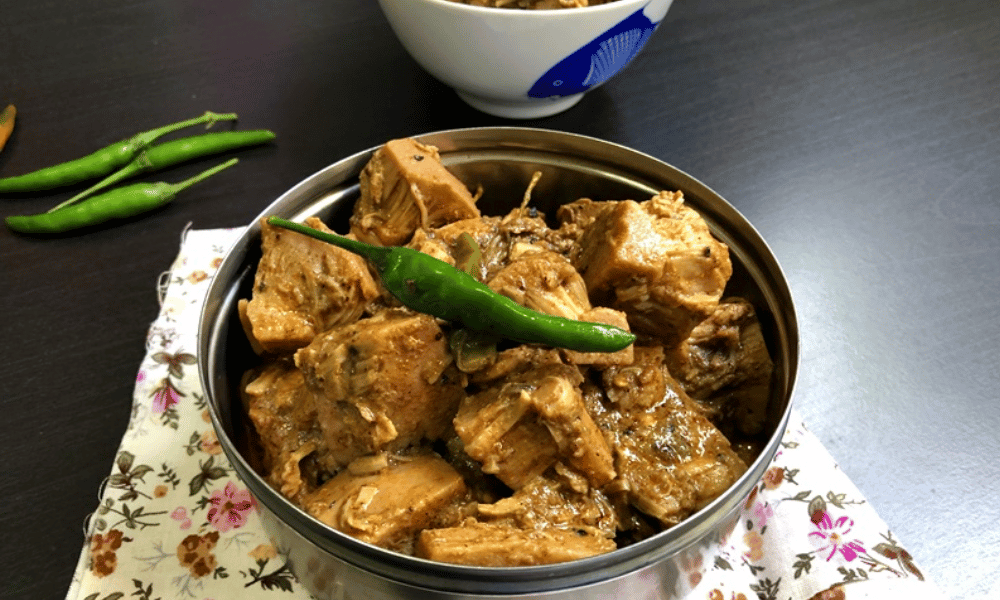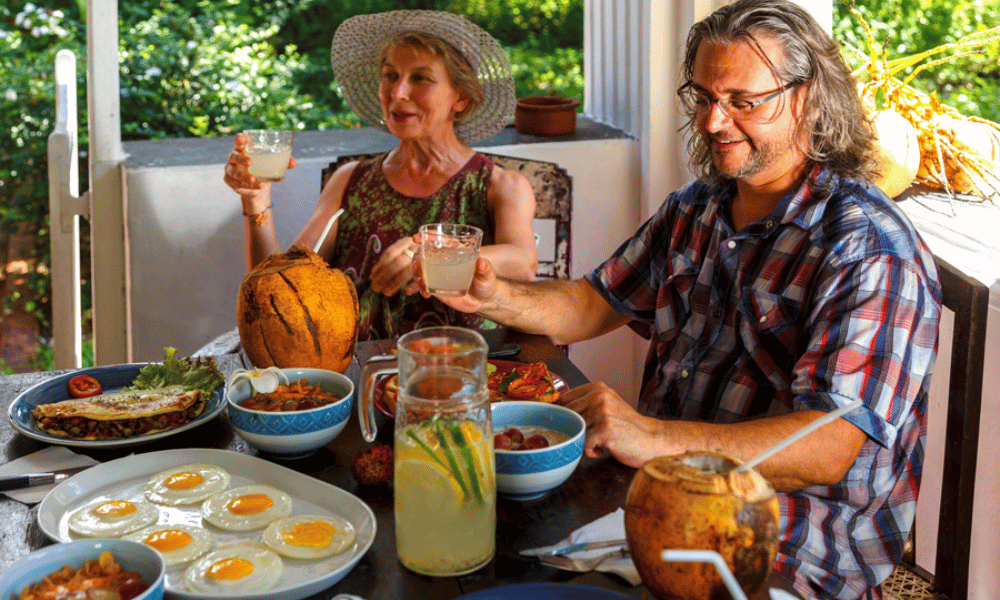Delightful Foods In Sri Lanka
Sri Lankan cuisine—well, where do we begin? Believe us when we say there are a lot of delicious dishes this island country offers. Sri Lankans can take any fruit or vegetable and somehow create the most delicious dish out of it. Keep in mind that Sri Lankan food is spicy. Other than that, expect lots of coconut flavors in foods in Sri Lanka.
Whether it’s a meal, snack, or treat, you will surely love them all! If you are a foodie with an adventurous streak, you are in for a real treat. Get ready for a culinary adventure full of flavor, spice, and color during your visit to Sri Lanka.
Origins of Traditional foods in Sri Lanka
The Portuguese, Dutch, and English colonists also had a great influence on Sri Lankan culture and cuisine, much of which is still seen today, even though Sri Lanka gained independence in 1948. Today, Sri Lanka is home to various ethnic groups, cultures, and languages, all of which combine to give us the delicious variety of food that we can enjoy today.
Must-Try Dishes in Sri Lanka
Rice and Curry
Rice and curry are the traditional staple foods in Sri Lanka. It is eaten everywhere, usually twice a day, by almost everything. “Rice and curry” in Sri Lanka refers to a variety of small curry dishes ranging from chicken and fish to vegetarian dishes such as pumpkin curry, eggplant curry, and dal curry, always served with rice.
Sri Lanka has many different types of curry, such as jackfruit curry, beetroot curry, pumpkin curry, pineapple curry, etc.; they are all very tasty! Did you know that rice and curry are the most popular traditional wedding foods in Sri Lanka? There is no set way to make these curries.
Hoppers (Aappa)
Hoppers (‘aappa’) are the Sri Lankan version of pancake batter, made with coconut milk and fermented rice flour. They are then cooked in a small wok-like pan so that the dough becomes thick and soft on the bottom and thin and crispy on the edges. After that, a fried egg is added in the middle to serve as an “egg in the hole”!
Egg cases are sometimes topped with lunu miris, which is a sambol made with onion, chili, lemon juice, and salt. They are often part of the Sri Lankan breakfast but are also a staple on the dining table, where they are delicious with dals, curries, and other hot sambols.
String hoppers (Indi Aappa)
The string hopper (Indi Aappa) is the other main hopper you will find in Sri Lanka, but it is made with a thicker rice flour dough base than the previously discussed hoppers. The dough is then pressed through a jumping machine (like a pasta press) into thin noodles that are steamed.
Spinach stir-fries are usually served with curry and are also popular for breakfast, but you can also see them at dinner, where they are delicious with the sauces of the meal. In Kerala, there is also a sweet version served with coconut milk and sugar. However, strings are nice enough to eat if you want to be like the locals and dip them by hand into the curry.
Foods in Sri Lanka: Kottu Roti
A plate of chopped roti combined with curry sauce and then topped with veggies, eggs, or meat constitutes the Sri Lankan Tamil meal known as kottu roti. It began in the 1960s in Jaffna, northern Sri Lanka, as a cheap takeaway for the lower socio-economic classes. Since then, it has crossed social boundaries across the country to become a staple for everyone and is especially popular among young people, who enjoy it as an after-dinner snack.
A plate of kottu roti is a bit like fried rice, except instead of rice, the bottom is roti (bread). It’s a very comforting dish that’s perfect when you’re craving a really greasy burger. If you order it from a Sri Lankan roadside shop, the cook will fry the roti in front of you with some other ingredients, often singing his songs and banging the food in the pan to the beat!
Watalappam
This is among the best foods in Sri Lanka. Watalappam is a delicious desert introduced by Malay immigrants. It is made from coconut milk, eggs, cashews, jaggery (a sweet product derived from sugarcane), and various spices, especially cardamom, cloves, and nutmeg.
It is a popular dessert in Sri Lanka and is served during religious festivals (especially at the end of Ramadan for Sri Lankan Muslims) and large celebrations such as weddings. The composition and taste are somewhat similar to custard. Watalappam is steamed and usually comes with three different colored layers of flavor.
Lamprais
This dish shows the outside influences on Sri Lanka’s cuisine and how it came to be considered “Sri Lankan” food. The name lamprais comes from the Dutch word lomprij and was brought to Sri Lanka by Dutch hamburgers.
Since the name means a package, it is not surprising that lamprais are made by placing rice (which is already in stock), mixed beef curry, Dutch meatballs, eggplant curry, and spices in a banana leaf, which is then steamed. Yes, there are a lot of ingredients, but somehow it works!
Wambatu Moju
Wambatu moju is one of the tastiest vegetarian foods in Sri Lanka. Wambatu moju, which literally translates to “pickled eggplants,” is a common accompaniment to many different courses. It is made by frying eggplant slices and then caramelizing them with sugar, vinegar, red onion, green chilies, mustard seeds, and turmeric.
Eggplant is perfect for Wambatu moju because it gives a meaty texture to all the delicious flavors. The aubergines (or aubergines) found in Sri Lanka are a little different than what you are used to, being longer and thinner than the western varieties.
This dish melts in your mouth when you try a few, combining sweet, sour, and salty flavors in a spectacular dance of flavors. You’ll obviously encounter regional variations in the recipe, but it’s pretty much guaranteed to be delicious wherever you go.
Kiribath
Kiribath is basically made by boiling rice in coconut milk until all the liquid is absorbed, then forming the glutinous rice into pieces that are cut and served like slices of cake. It is often eaten with the aforementioned sambol chili, lunu miri, and sometimes sweetened with jaggery. What does Kiribati mean?
Traditionally, Kiribati is made for special occasions, especially those that mark important times in life, such as birthdays, new years, or simply the first day of the month. It is also one dish that seems to be completely unique to Sri Lanka, with no outside influences.
Kiribath is believed to be what Lord Buddha ate shortly after his enlightenment, which is why the dish has become so important for events that mark new beginnings or transitions in life.
Gotu Kola Mallung
In Sri Lanka, you can also find delicious and extremely nutritious green dishes like Gotu kola! Gotu kola is an herb known in English as Asian pennywort and is often used as an accompaniment to Sri Lankan mallung or grilled vegetables. Most Sri Lankan dishes include one or two mallung dishes to give the locals some vitamins.
Mallung means mixed, and although there are many different types, Gotu kola mallung is made with gotu kola, onion, chili, and coconut. Gotu kola mallung is a tangy and refreshing dish, quite similar to a kale salad
Konda Kavum
Konda kavum (or kevum) is another popular Sri Lankan delicacy. This is one of the foods in Sri Lanka served at traditional Sri Lankan weddings with watalappam. But it is more commonly known as Sinhala or Tamil.. Konda kavum is made from rice flour, kithul (or sugar palm) juice, and spices such as fennel seeds, anise, and cardamom.
The mixture is then fried in a fryer, but what makes them special is the small “top knot” created during cooking, which is thought to represent the bundle of hair worn by the native women. Making this dough uses a long stick to roll the dough while it bakes, and it’s not as easy as it looks.
If you are ever in Sri Lanka during the New Year (April) and see people selling Konda kavums, stop by to see the clever technique and, of course, try these delicious treats.
Achcharu
Achcharu,” or Sri Lankan pickle, should be on this must-eat list of foods in Sri Lanka. Well, technically, it’s a mix of pickled vegetables, but they can be used as a side dish or to flavor other dishes. Achcharu is a pickle that has its roots in Malaysia, where it was brought to the country by the Malay community.
It was adopted by Sri Lankans and is now so popular that you probably cannot attend a party or wedding buffet without it. It is such a delicious blend of sweet, sour, and hot flavors. A marinade of mustard seeds, chili, garlic, ginger, vinegar, and sugar is the foundation of most Achcharu dishes. However, you may find variations on this theme from area to region and even within families.
Polos
Polos (green jackfruit curry) is a must-try dish during your visit to Sri Lanka. Jackfruit is consumed at varying degrees of ripeness, from very ripe and sweet to green and starchy. Polos is a Sri Lankan curry made from young green jackfruit. The fruits are cut into bite-sized pieces and boiled until soft. It is then cooked with onion, ginger, garlic, and spices including turmeric, mustard seeds, roasted curry powder, chili powder, and curry leaves.
As a final step, add the coconut milk and cook until most of the liquid has reduced, leaving all the lovely flavors in the jackfruit cubes. Polos are a common dish available in most Sri Lankan curry restaurants.
Pol Sambol
In a country where the coconut is extremely important, there is one Sri Lankan side dish that commands respect. Pol-sambol is a simple mixture of finely grated coconut, red onion, dried whole chilies or chili peppers, lime juice, and salt. The ingredients are chopped or ground and combined in a bowl.
In Sri Lanka, pol sambol is used as a side dish with anything and everything. It goes well with rice and curry, pol roti (coconut roti), warm paratha, stuffing funnels, or even just slices of bread.
Wood apple
It wouldn’t be a Sri Lankan food conversation without a wood apple. Wood apples are a fruit native to Southeast Asia, and they’re roughly the size of a coconut. It also has the same hard rind and pungent, almost blue cheese smell. Inside the shell is a dark brown paste that resembles something between tamarind pulp and fermented raisins.
Wood apples can be eaten straight from the skin, but one of the most popular ways to eat (or drink) them across Sri Lanka is in a thick smoothie known as apple juice. The fruits are mixed with jaggery (or sugar) and water into a smooth paste. It has a unique sour and sweet taste.
Kurakkan helapa
‘Kurakkan helapa’ is a delicious treat that you’d love. It’s made from Kurakkan, which is a type of grain that has been consumed by Sri Lankans for centuries. This is made by mixing powdered kurakkan with water and rolling it out flat on a leaf called ‘Kanda.’
Then they add a delicious mix of honey and grated coconut to the middle of the dough and steam it before serving it. It’s the perfect afternoon snack you could ask for.
Wrapping up
There you have it! Now you know the must-try foods in Sri Lanka during your visit to the island country. As we discussed, Sri Lankan cooking offers a variety of wonderful dishes. A world of adventure, flavors, and warmth awaits you when it comes to Sri Lankan cuisine. Undoubtedly one of Asia’s most brilliant cuisines, Sri Lankan food has so much to offer. Sri Lanka has historically been home to exotic ingredients and centuries-old cooking practices.
Over time, European and Asian influences entered Sri Lankan cuisine, cultivating a truly extraordinary variety of dishes and concoctions, all alive with color, heat, and spice. You’ll come to enjoy the spicy and flavorful Sri Lankan curry and the healthy and refreshing fresh coconut milk used in many sweet and savory Sri Lankan recipes.
Follow Us
Sri Lanka Holiday Packages




